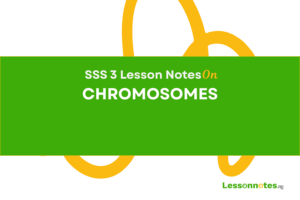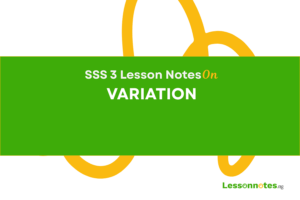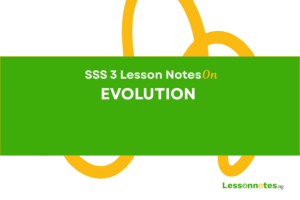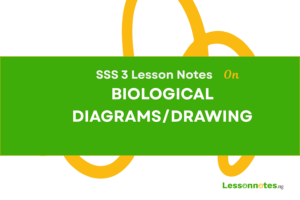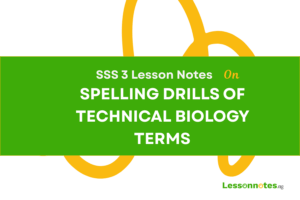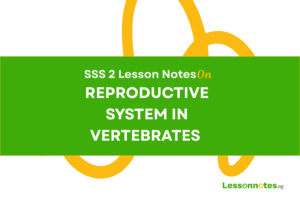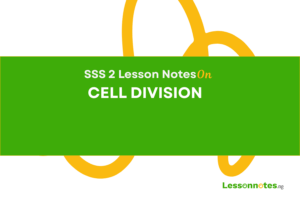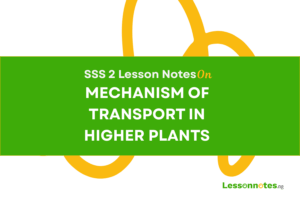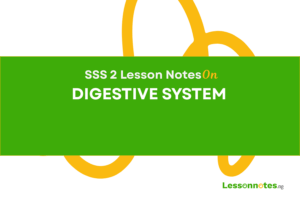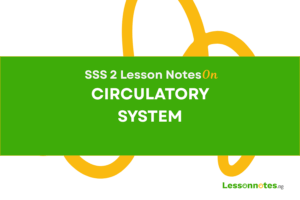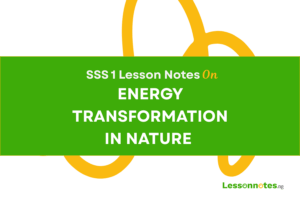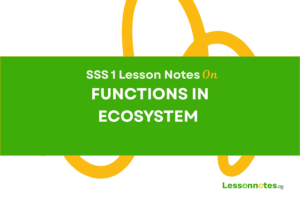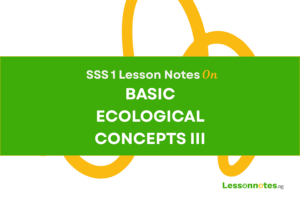Relevance Of Biology To Agriculture SS1 Biology Lesson Note
Download Lesson NoteTopic: Relevance Of Biology To Agriculture
CLASSIFICATION OF PLANTS
Plants exist in various forms and types hence, the need for classification. Plants can be classified on the following bases
- Botanical classification
- Agricultural classification
- Classification based on life cycle
- Classification based on size
-
BOTANICAL CLASSIFICATION
The concept of binomial nomenclature has it that a plant kingdom can be subdivided into divisions, classes, orders, families, genera and species. This is based on their structures, functions and evolutionary trends. Plants are then generally classified into three brand groups
- Thallophytes (A)
- Bryophytes (B)
- Tracheophytes (C)
Tracheophytes are further grouped into pteridophytes (D) and spermatophytes (E). The Spermatophytes can also be grouped into gymnosperms (F) and angiosperms (G). The angiosperms are subdivided into dicot (H) and Monocot (I)
A & B are non-vascular plants, and C refers to vascular plants. D refers to non-flowering plants; E refers to seed plants while G refers to flowering plants proper.
-
AGRICULTURAL CLASSIFICATION
Agricultural classification of plants is based on:
- The product obtained from the plants
- The parts of the plant that are useful
- The economic importance of the plants
Plants are therefore classified agriculturally into the following
a) CROPS AND WEEDS: – plants that are needed on the farm are called crops while other unwanted are called weeds.
b) FOOD CROPS AND CASH CROPS: – crops grown mainly for human consumption are called food crops e.g. maize, yam etc. Those grown mainly to earn money are cash crops e.g. cocoa, coffee
c) ROOT CROPS: – are plants which store mainly starch in edible underground stems or roots e.g. yam, cassava etc.
d) CEREAL CROPS: – these are monocotyledonous plants of the grass family, whose grains are eaten e.g. maize, millet, guinea corn, rice, wheat, etc. They are rich in carbohydrates.
e) FRUITS CROPS:- are rich in vitamins and minerals. Fruits are also rich in sugar. These include oranges, mangoes, avocado peers, cashews etc. whose fruits are eaten
f) VEGETABLE CROPS: – are herbaceous plants whose vegetable (leafy) parts are eaten. They include spinach, lettuce, carrots, cabbage, okra, tomato, onion, pepper etc. They are also rich in vitamins and minerals.
g) LEGUMES: – are plants of the beans family such as cowpeas and groundnuts whose seeds are eaten. They are rich in proteins
h) SPICES: These are plants whose parts are used for seasoning food such as pepper, curry, thyme and ginger.
i) LATEX PLANTS: These are plants that are grown for their useful latex (a milky fluid) e.g. rubber plants used for making natural rubber in tropical countries
j) FIBRE PLANTS: These are plants which produce fibre for textile and bag production e.g. cotton, hemp etc.
k) BEVERAGE AND DRUG PLANTS: – Are plants whose parts are taken as stimulants or drugs e.g. tea, coffee, cocoa kola nut, and quinine tree for medicine.
l) OIL PLANT: – Produce oil of economic value e.g. oil palm, shea nut, groundnut, coconut, castor oil plant and melon.
PLANT CLASSIFICATION BASED ON LIFE CYCLE AND SIZE
Based on life cycle (period or existence) plant can be classified as
- ANNUALS: – These are plants which complete their life cycle within one growing season or a year e.g. Maize, Yam, Melon, cowpea, tomato etc.
- BIENIALS: – These complete their life cycle within two years e.g. Banana, plantain, pineapple etc.
- PERENNIALS: – These persist over (more than) two years producing their yields every season e.g. orange, mango, oil palm cocoa etc.
Plant-based on size fall into three categories:
- Herbs are small plants with fleshy stems e.g. Spinach, waterleaf etc.
- Shrubs are medium-sized plants with woody stem branches very close to the ground (soil) e.g. hibiscus
- Trees are big plants with woody trunks, which branch at the top e.g. Iroko, Mahogany, Cashew, and Coffee etc.
EFFECTS OF AGRICULTURAL ACTIVITIES ON THE ECOLOGICAL SYSTEM
The following agricultural or farming practices carried out by farmers have some consequences on the ecological system. These agricultural practices and their effects include:
1. Bush Burning: Bush burning involves the setting of fire in the bush to clear out the vegetation. Effects of bush burning include:
i. Destruction of the organic matter in the soil
ii. The atmosphere is polluted with smoke.
iii. Many of the micro-organisms are killed
iv. exposes the soil to erosion and leaching
v. reduces the water-holding capacity of the soil
vi. Bush burning leads to the extinction of some animals
vii. The ash produced by bush burning gives the soil a slightly alkaline nature
2. Overgrazing: Overgrazing is a situation where more animals than what can be supported on a particular pasture are put there to graze. It is a way of exceeding the carrying capacity of the soil. Overgrazing:
i. Removes the vegetative cover of the soil
ii. Exposes the soil to erosion
iii. Destroys the soil structure
iv .More faeces are dropped on the soil which could improve the fertility of the soil.
v. Weeds can eradicated from such lands
vi .It leads to the compactness of the soil resulting from the continuous trampling of animals.
vii. Causes poor growth and regenerative capacity of vegetation
3.Tillage: Tillage is defined as the working, digging or breaking up of the soil in preparation for the planting of crops.
i. Tillage encourages leaching
ii. It helps to loosen the soil
iii. It enhances proper aeration of the soil
iv. Tillage exposes the soil organisms and may kill some
v. It changes the structure and texture of the soil
vi. Tillage leads to changes in the ecology of the land
vii. Intensive tillage can lead to loss of soil fertility.
viii. It exposes the soil to erosion.
4. Deforestation: Deforestation is the continuous removal of forest stands (trees) either by bush burning or indiscriminate felling without replacing them. Deforestation:
i. It reduces water percolation due to the absence of humus and dead leaves on the soil
ii. It reduces the amount of rainfall in the area
iii. Deforestation hinders micro-organisms activities in the soil
iv. It results in loss of nutrients through leaching and erosion
v. It reduces the wildlife population in the area concerned
vi. It reduces the humus content of the soil
5. Fertilizer application: This involves the application of certain chemicals or substances into the soil to improve its fertility. Effects of fertilizer application include:
i. It brings about the loss of organic matter or humus
ii. It deteriorates the structure of the soil
iii. Fertilizer increases the porosity of the soil
iv. It supplements the nutrient content of the soil
v. Excessive application of fertilizer can cause soil acidity
vi. The productive capacity of the soil is enhanced by the application of fertilizer
vii. It stimulates vegetative growth, hence it reduces soil erosion
6. Application of pesticides/herbicides: Pesticides are chemical substances which are used to destroy or kill pests while herbicides are also chemical substances in the form of solutions or gases capable of destroying weeds. Effects of pesticide application include:
i. It causes pollution of the environment.
ii. It affects or destroys other useful plants and animals.
iii. It reduces the population of the target insects or plants.
iv. Pesticides may leave undesirable residues in the environment.
v. When such chemicals are washed into rivers or lakes, they can cause the death of aquatic animals.
ASSIGNMENT
1. Which of the following is not an example of a classification of plants
(a) Herbs and shrubs (b) annual and perennials (c) Graminae and enphorbinosae (d) monocot and dicot
2. Plants can be classified based on all these except
(a) botanical (b) size (c) agricultural use (d) planting season
3. Fruit crops are rich in
(a) Vitamin and Minerals (b) Vitamins and protein (c) Mineral and carbohydrate (d) Protein and carbohydrate
4. Spices include
(a) Pepper and ginger (b) Palm oil and ginger (c) Lettuce and carrot (d) yam and maize
5. Which of these does not harm the ecological system
(a) fertilizer application (b) crop rotation (c) tillage (d) bush burning
6. State three effects each of the following farm practices on the ecosystem
i. Bush clearing
ii. Shifting cultivation
iii. Monocropping
7. What are the classes of plants based on uses?


